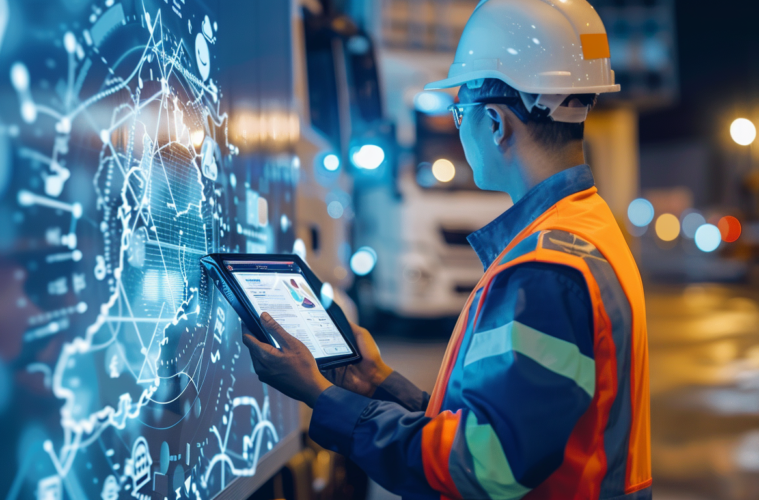The landscape of global transportation is undergoing a significant transformation fueled by technological advances and evolving consumer expectations. New trends in shipping services are reshaping the way goods are delivered, offering faster, more efficient, and cost-effective solutions. As e-commerce continues to surge, it’s become essential for shipping services to adapt, embracing sustainability, automation, and data analytics to meet demand.
Advancements in transportation technology are paving the way for a more interconnected and automated future. Autonomous vehicles, unmanned aerial vehicles (UAVs), and electric trucks are just a few developments redefining shipping norms. These technologies contribute to safer, more reliable delivery services and help reduce the environmental footprint of transportation. Intelligent routing algorithms and real-time tracking systems have also elevated the customer experience, providing a transparent and seamless shipping journey.
Optimizing logistics strategies is vital in an industry where time equals money. Companies looking to stay ahead are integrating sophisticated software solutions that streamline operations from warehouse to the final destination. Supply chains are becoming smarter and more adaptable, with predictive analysis assisting in inventory management and proactive decision-making. As we look forward, it’s clear that embracing these growing trends will be crucial for businesses aiming to thrive in the dynamic world of shipping services.
Technological Advancements in Transportation
In the rapidly evolving landscape of transportation, cutting-edge innovations are paving the way for more efficient, sustainable, and faster shipping services.
Autonomous Vehicles
Advances in artificial intelligence and machine learning have led to the development of autonomous vehicles. These self-driving trucks, drones, and ships are revolutionizing the shipping industry by potentially reducing labor costs and increasing safety by minimizing human error. They can navigate through complex environments using a combination of sensors, cameras, and advanced algorithms.
- Examples:
- Drones: Amazon’s Prime Air for package delivery
- Self-driving Trucks: Waymo’s autonomous freight hauling
Electric and Alternative Fuel Solutions
The push for electric and alternative fuel solutions is a response to environmental concerns and the need for cleaner transportation modes. Many companies are now investing in electric delivery vans and trucks that produce zero emissions.
- Benefits:
- Reduced greenhouse gas emissions
- Lower operating costs compared to traditional fossil fuels
- Key Players:
- Tesla: Electric semi-trucks
- Nikola: Hydrogen fuel cell trucks
High-Speed Rail and Hyperloop Technologies
High-speed rail and Hyperloop technologies stand as beacons of high-speed, energy-efficient transportation. Unlike conventional trains, these systems can travel at unprecedented speeds over land, significantly cutting down travel and shipping times.
- Developments:
- High-speed Trains: China’s Maglev trains reaching speeds of 600 km/h
- Hyperloop: Virgin Hyperloop’s pods that may travel at over 1000 km/h
Impact on Global Trade and Economy
The future of shipping services holds significant implications for global trade and economic growth. Advancements and adaptations within the industry are set to streamline operations, while developments in infrastructure and regulatory landscapes strive to balance economic benefits with environmental considerations.
Shipping Industry Adaptations
Shipping providers are revamping their strategies to keep pace with the evolving demands of global trade. They’re investing in digital technologies to improve tracking, optimize routing, and enhance the overall efficiency of shipping operations. For example:
- Autonomous vehicles are being tested for their potential to reduce labor costs and increase safety.
- Blockchain technology is increasingly adopted to provide transparent and secure documentation for international transactions.
Infrastructure Development for Future Transport
Infrastructure is the backbone of effective transportation, and significant investments are being made in this area to support the changing face of shipping:
- Ports are being upgraded with automated systems and extended capacities to handle larger, next-generation vessels.
- Countries are developing intermodal connections, linking sea, road, rail, and air transport seamlessly for faster and more efficient delivery of goods.
Regulatory Changes and Environmental Impacts
Regulations are tightening to ensure the shipping industry aligns with global sustainability goals:
- Emission standards are becoming stricter, compelling companies to seek greener alternatives, such as electric vehicles or biofuels.
Waste management protocols have been established to mitigate the impact of shipping on marine ecosystems.

